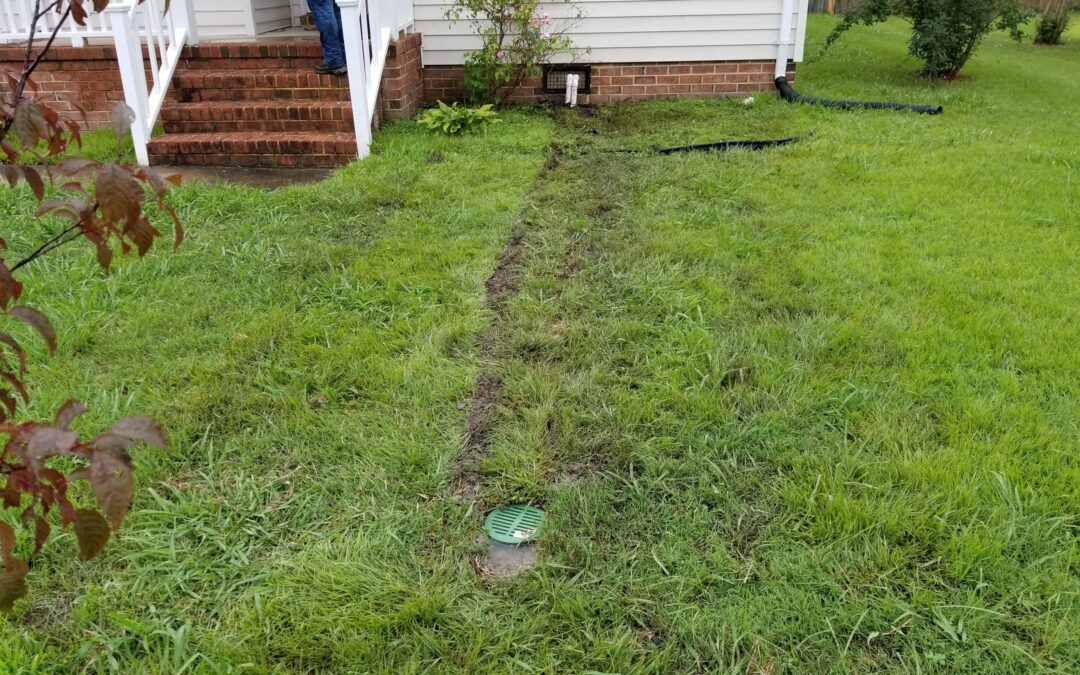Did you know? French drains are not actually from France. They were popularized in the 1850’s in a book published by Henry French, from Concord, Massachusetts. The book discusses different ways to drain water around the farm. The basic concept of a French drain involves gravity and the way water naturally travels – downhill. If you live in an area that needs drainage, a French drain is an easy way to divert sitting water away from your home. This helps with exterior waterproofing your home’s foundation and it discourages mold, insects, and other water-related problems. French drains are simple but effective. There are many situations that can be improved by a French drain.
- A wet basement – if you notice water or dampness in your basement, you may need a French drain. Water is collecting somewhere and seeping into the basement. This can be problematic because moisture in the basement can lead to mold, mildew, and decay if you store things in the basement.
- Standing lawn water – if you notice a certain area on your lawn that always has a puddle or is soggy, a French drain can help with this. Standing water attracts bugs like mosquitoes and it can leave your yard looking muddy and unattractive.
- Retaining walls – if you have a retaining wall on your property, water is an enemy. The wall has probably been built to hold earth in place, whether it’s for a path, a flower bed, or just for aesthetics. Water causes erosion as it flows downhill, and this can cause the retaining wall to collapse. Installing a French drain can divert water away and reduce the amount of erosion around the wall.
- A driveway prone to collecting water – if your driveway collects water in a certain area, or if it has been washed away in a big storm, a French drain will help. Water on or around the driveway can cause erosion to weaken or destroy the driveway. If your driveway is located in the path of storm water, it could be knocked out all together. Like with the retaining wall, the French drain can redirect the water so that it is not damaging the driveway.
French drains are relatively simple but they are effective in what they do, when installed properly. Here is how a French drain works:
- After determining where the problem is, a trench is dug from that location, sloping downward, toward the location where you want the water to empty out. The slope should increase 1 inch for every 8 feet it travels. This allows gravity to do its work. Even if you live in a flat area, the trench will create a downhill slope.
- A pipe (usually PVC) is laid along the bottom of the trench. It has holes along the top of the pipe to allow water to flow into the pipe.
- On top of the pipe, gravel or large pebbles are laid. This acts as a filter so that bigger things, like leaves, sticks, or other debris stay above the pebbles, and the water filters down into the pipe.
- The pipe directs the water downhill, to a safe emptying location. This is usually the street (where it can then flow into the gutters and the piping takes it to a storm water storage area), a dry well, a drainage ditch, or a low-lying area of your property (well away from your home).
If you have problems with water in your basement or around your home, a French drain is a great solution. Call Tidewater Home Improvement today to schedule an appointment with our highly-trained team. We can assess the situation and determine how to provide exterior waterproofing to your home and your budget.


Recent Comments